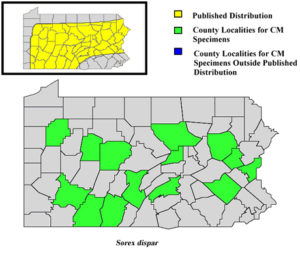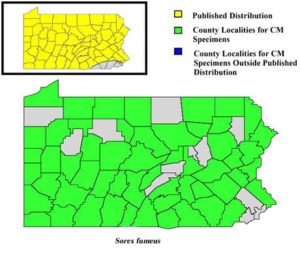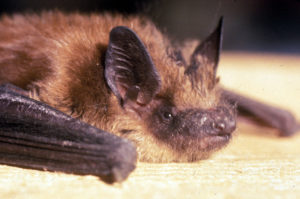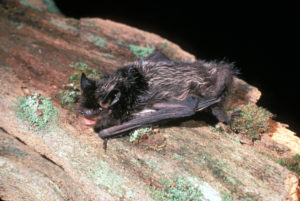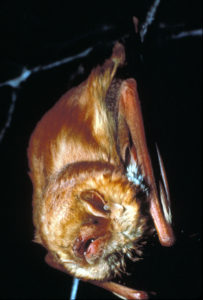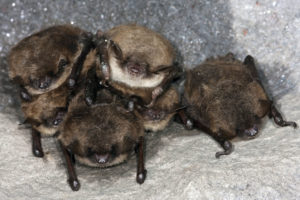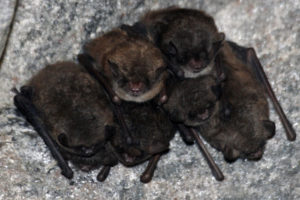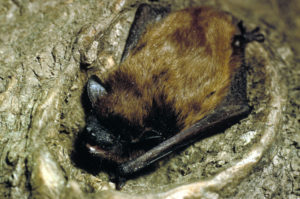This mammal is not common. Although most often trapped on talus slopes, it has also been found in recently disturbed areas such as forest clearcuts.
Insects
Smoky Shrew (Sorex fumeus)
The smoky shrew nests under rotting logs, in rocky crevices, stone piles, and under discarded lumber.
Big Brown Bat (Eptesicus fuscus)
Banding records show that this bat may live as long as nine years. The big brown bat usually hibernates in caves or man-made dwellings once food sources begin to dwindle.
Silver-haired Bat (Lasionycteris noctivagans)
This species migrates south of Pennsylvania for the winter.
Red Bat (Lasiurus borealis)
One to four young are born in June and cling to the mother in flight until they are too large for her to manage.
Hoary Bat (Aeorestes cinereus)
This, the largest and most strikingly colored bat in Pennsylvania, migrates when the weather becomes too cold to forage on insects. It is believed that its migration pattern follows that of insectivorous birds. With its 15-inch wingspan, its flight has been described as erratic and clumsy. However, most sources say that it is rarely observed because of its habit of emerging well after dark.
Small-footed Bat (Myotis leibii)
George C. Leib of Erie County, Ohio, sent a specimen of this bat to naturalists Audubon and Bachman in 1842. They recognized it as a new species and named it after Dr. Leib.
Little Brown Myotis (Myotis lucifugus)
This is our most common species of bat. It frequently establishes nursing colonies at sites to which the females return each year. In 1939 during planning for the Pennsylvania Turnpike, Charles Mohr banded and transplanted an estimated 2,500 Myotis from tunnels that had originally been constructed for a railroad. Unfortunately, the bats did not accept this relocation some 80 miles away from the tunnels which had existed, largely undisturbed, since 1885. In late 1940, bats were still seen flying through the completed turnpike tunnels.
Northern Long-eared Bat (Myotis septentrionalis)
The ears of this bat are longer than those of any other member of the genus Myotis in Pennsylvania.
Indiana Myotis(Myotis sodalis)
This bat was not recognized as a species until 1928. In 1966, its rarity was mentioned by Doutt, Heppenstall, and Guilday in Mammals of Pennsylvania. Today, it is a federally endangered species. It is known from several caves in the Commonwealth today and these sites are gated to protect the species from disturbance.
Evening Bat (Nycticeius humeralis)
Reported from only a few southern counties in Pennsylvania, this is probably an accidental visitor and not a regular resident.
Eastern Pipistrelle (Perimyotis subflavus)
This bat is known to live up to seven years. Its flight is said to be weak and fluttery, thus earning it the nickname the “butterfly bat.”

